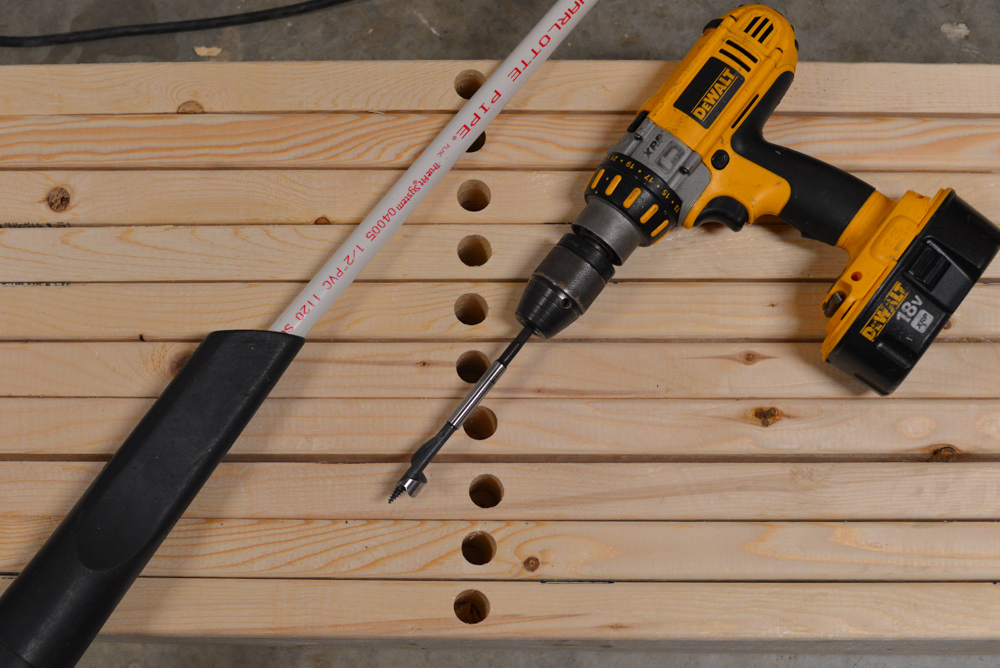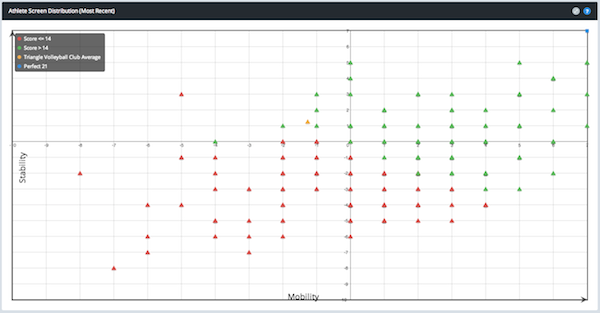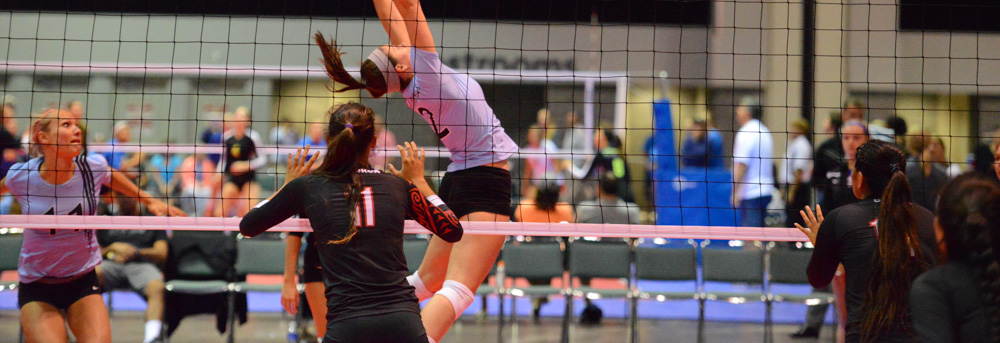Scaling FMS™
Functional Movement Screening and Correctives for Large Groups
Here’s the challenge: we know that strength and movement training can improve athlete safety and performance. How can a non-profit volleyball club with a limited budget and almost 300 student-athletes effectively individualize its strength and mobility curriculum to meet each athlete’s needs given a relatively wide variation in underlying fitness and experience?
When faced with this challenge heading into the 2015 season, one power tool immediately jumped out: the Functional Movement Screen™. First introduced into the literature in 2001 by physical therapist Gray Cook and trainer Lee Burton, it has been validated as an effective injury prediction tool in competitive athletes while providing an excellent snapshot of an athlete’s mobility, stability, and competence in basic functional movement patterns.
Like most competitive sport clubs, Triangle Volleyball Club has limited time available for general strength and conditioning. Off-court training sessions range from 15 to 30 minutes per practice, so we needed an effective way to take advantage of these limited windows to work athletes through the screening process. Finally, once we performed baseline screening, we needed a way to scalably recommend individual corrective exercise and followup to each athlete.
As of yesterday, the staff at Triangle Volleyball Club completed a relatively audacious goal – screening all of their 13-18 year-old female athletes during the PACT [Power Agility & Core Training] segment of 12 practice sessions between December 1 and 18. The data that we generated is invaluable, as each athlete is now empowered over the holidays to begin working on her first prioritized limitation in Gray Cook’s correction hierarchy.
How We Did It
First, someone (at least one person) in your organization should be FMS™ Certified. Whether you take the online course, or have the chance to attend one of Functional Movement’s seminars, having one person formally trained in accurate data collection is essential.
Second, that one person needs the support from the organization’s leadership and buy-in from other coaches. In our case, we have many coaches with personal and professional interest in athlete safety and performance, including several pursuing careers in exercise science and physical therapy. Their combined enthusiasm gave us a core group of screeners who ultimately saw the project through to completion.
Next, you need a lot of screening kits. In our case, we purchased one kit from PerformBetter.com and then used the following recipe to build ten additional kits with affordable components from our local home improvement store:

- Cut two pieces of 1/2" PVC pipe, each 2 feet long.
- Cut one piece of 2x6, 5 feet long, with attention to choosing straight and unwarped wood.
- Drill 2 holes using a 7/8" auger-type wood bit centered at 15" and 45" in the edge of each 2x6. Holes should be drilled to a consistent depth of 3 1/4".
- Use 1/4" nylon rope and suitable rope clamps to create a snug loop at each end of the rope so it is taut but moveable when stretched between the PVC pipes for the Hurdle Step.
- Using a drywall square or suitable straightedge with a construction marker, label each 2x6 with appropriate inch measurements.
- Spray the 2x6 with several coats of clear acrylic to protect the markings.
- Drill a smaller hole through each 2x6 suitable for a smaller dowel to support the 2x6 when it is on its edge for the Hurdle Step.
- Each test kit should also be accompanied by a 1 to 1-1/4" dowel, 4 feet long, marked every half inch to 26 inches or so.
Finally, you need a way to manage and track your screening data. Given the limited experience of our screeners, we needed an online application usable on their phones and tablets that would allow quick and accurate result recording. Since screening sessions were always time-limited, we also needed the ability to pause a screen in progress so that another screener could pick it up at the next session. Using an innovative Web application suitable for phones and tablets, screeners could collborate while screeningn multiple athletes at once. This application had the added benefit of giving us and our athletes innovative visualizations of screen results and individualized corrective recommendations for followup.
What We Learned
Not surprisingly, there is a wide range of FMS scores in athletes ranging from 13 to 18 years old across different levels of play. Total scores ranged from 9-20, with exceedingly low scores found in athletes with existing injuries that limited screen completion. The overall average score was 14.5, which is comparable to other reported populations.

What’s Next
Aggregate results are academically interesting, but what’s most important is that each athlete now has a prioritized list of recommendations for improvement, and we have a framework in place to quickly complete followup screens throughout the season as we advance their strength and conditioning training in conjunction with an improved awareness of movement and mobility.
Now we’ll see how many athletes choose to invest in their mobility and stability homework over the course of the season, hopefully with positive results for their durability and performance.
Functional Movement Screen and FMS are trademarks of Functional Movement Systems, Inc.
